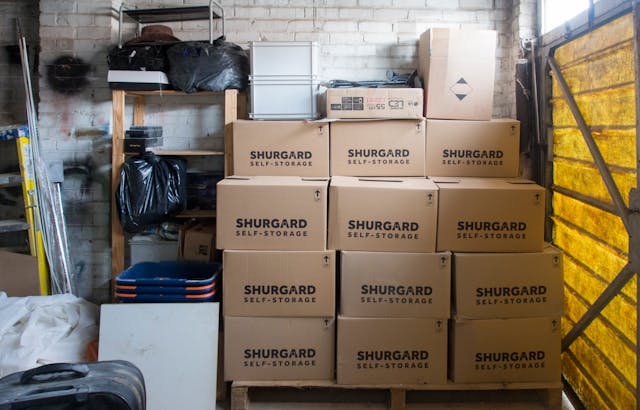
How to Organize Your Self Storage Unit for Seasonal Changes
When the seasons change, so do your storage needs. Whether you’re swapping out winter clothes for summer gear or storing seasonal equipment, organizing your self-storage unit efficiently can make these transitions much easier. A well-organized unit will help you find items quickly and maximize your storage space. Here’s a comprehensive guide on how to organize your self-storage unit for the upcoming seasonal changes.
Table of Content
1. Plan and Prioritize
Before diving into the packing process, take the time to plan. Start by making a list of the items you intend to store. Prioritize based on frequency of use. Items that you won’t need soon, like heavy winter coats or holiday decorations, can go in the back of the unit. Items you’ll need more often, such as seasonal clothing or sports gear, should be more accessible.
If you’re in need of a convenient and secure place to store your seasonal items, consider checking out a reliable Storage Munich unit. With ample space and great accessibility, it’s a great choice for both short-term and long-term needs.
2. Sort and Declutter
Before storing everything, sort through your items. This is the perfect time to declutter. Assess what you need and what can be donated, sold, or thrown away. Seasonal items often accumulate over time, so taking the opportunity to minimize your belongings will reduce clutter and free up more space in your storage unit.
For example, if you’re storing winter sports gear, check for any damaged or outdated equipment. Similarly, if you’re putting away summer gear for the winter, see if anything needs replacing or can be donated.
3. Use Proper Containers
Using the right containers will help protect your items and keep your storage unit organized. When packing, avoid using boxes that can easily collapse. Opt for sturdy plastic bins with lids to protect your belongings from dust, moisture, and pests. Label each container clearly with a permanent marker so you know exactly what’s inside without having to open it.
For seasonal clothing, invest in vacuum-sealed bags to save space. These bags not only protect clothing from dirt and moisture but also make it easier to store them in your unit without taking up much space. For fragile items, such as decorations, use bubble wrap and sturdy boxes to ensure everything stays intact during transport and while in storage.
4. Utilize Vertical Space
Maximize your storage unit’s space by using vertical storage techniques. Stack boxes and bins on top of each other, but be sure to place heavier items at the bottom to avoid crushing lighter items. Consider installing shelves or using shelving units to keep everything organized and off the ground. This also helps to keep your unit clean and accessible, especially if you need to retrieve items during the season.
When using shelves, be sure to leave room for airflow around your items. Proper ventilation can help prevent moisture buildup and reduce the risk of mold, particularly for clothes, books, or items made from materials sensitive to humidity.
5. Create Pathways and Label Everything
To make it easier to retrieve items, always create clear pathways in your storage unit. Don’t just stack everything in a corner and forget about it. Ensure that frequently used items are placed at the front of the unit and easy to access. Having pathways will also help you navigate your unit without having to shift boxes around constantly.
Label everything. This may seem like an obvious step, but it’s one that’s often overlooked. Each bin or box should be labeled with the season and type of items inside, such as “Summer Clothes” or “Christmas Decorations.” This simple step will save you time when searching for specific items in the future.
6. Protect Sensitive Items
Certain items require special care during storage. For example, electronics, appliances, or artwork should be wrapped carefully and stored in temperature-controlled environments, if possible. If your storage unit is not climate-controlled, make sure these items are packed securely and placed in areas of your unit that are less exposed to temperature extremes.
For clothes, fabrics, and delicate seasonal items, use garment bags or cotton covers to protect against dust and light damage. Avoid using plastic covers for clothes, as they can trap moisture and cause mildew to develop.
7. Maintain and Monitor the Unit
It’s not enough to just organize your self-storage unit once and forget about it. If possible, visit your unit regularly, especially when the seasons are about to change. Doing so ensures that your items are still in good condition and that no issues, like moisture or pest problems, have arisen. Regularly check on your storage to ensure it remains clean and well-maintained.
Some storage facilities offer pest control services or climate-controlled units to help keep your items in optimal condition, so take advantage of these features if available.
8. Prepare for the Next Season
Finally, when the next season rolls around, it’s time to do it all over again. As you retrieve seasonal items from storage, remember to replace them with items from the upcoming season. Keep your storage unit as organized as possible so that you can quickly swap out items and make room for new things.
Conclusion
Organizing your self-storage unit for seasonal changes doesn’t have to be a daunting task. With proper planning, the right containers, and a methodical approach, you can keep your seasonal belongings safe, accessible, and well-preserved. Don’t forget to take advantage of facilities like Storage Munich for convenient storage solutions throughout the year.
By following these tips, you can ensure that your items stay in excellent condition while making it easy to access them when needed, season after season.


